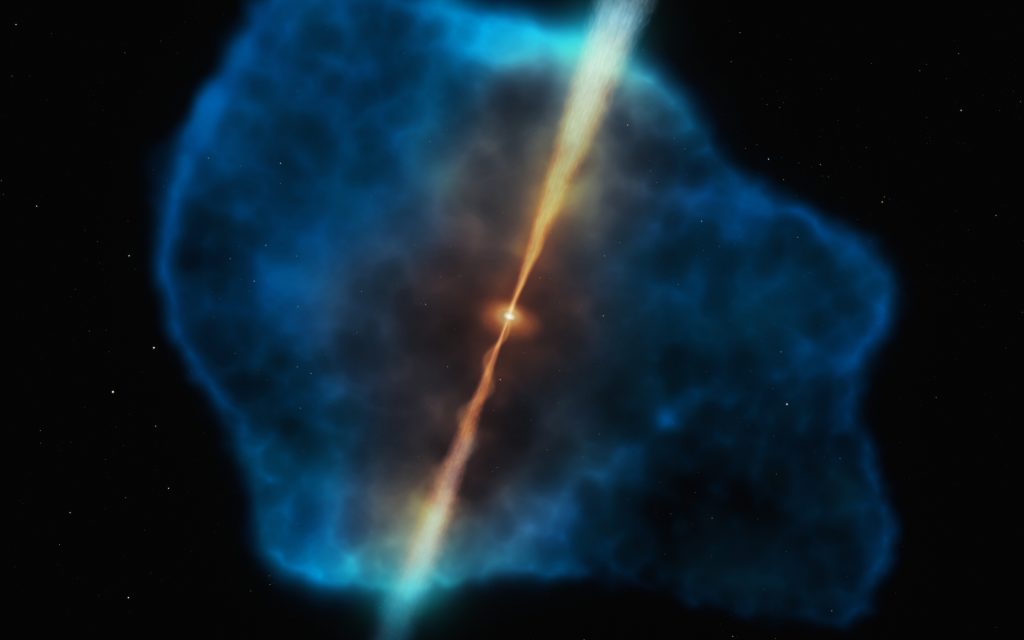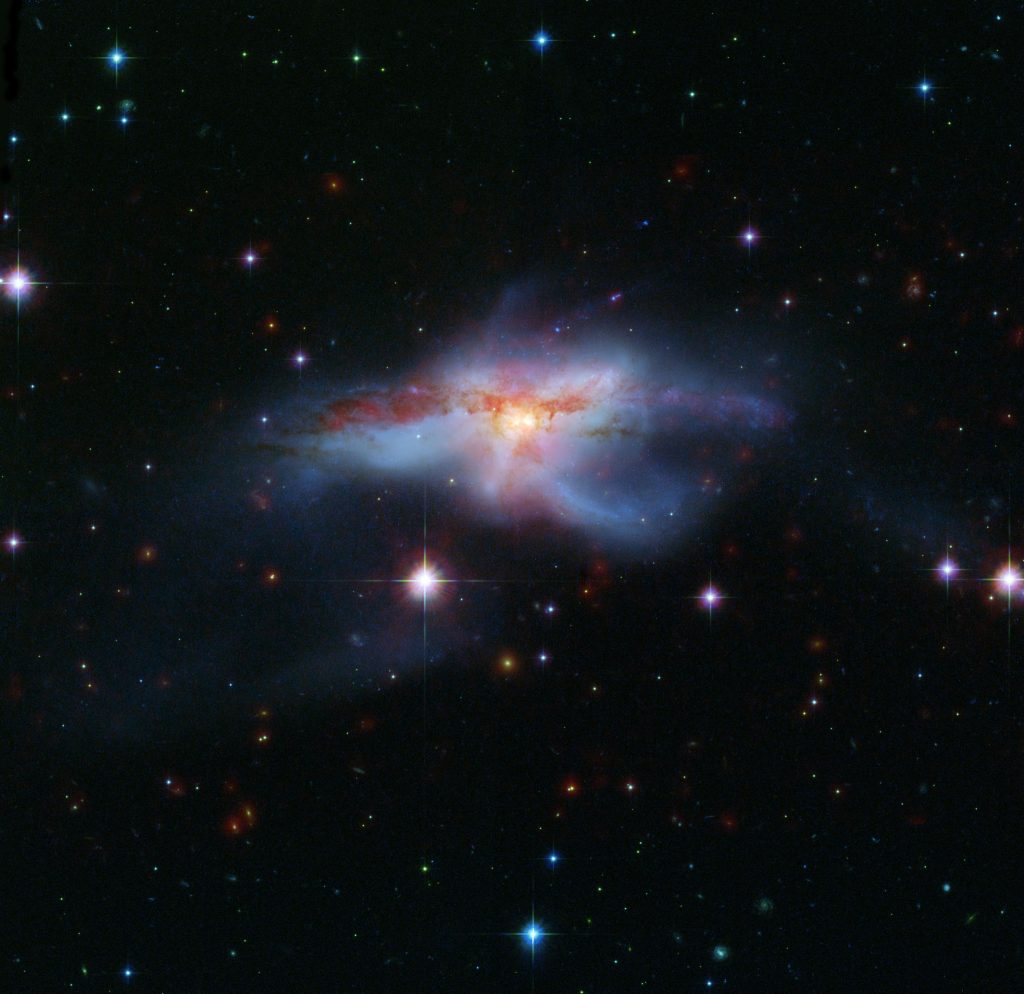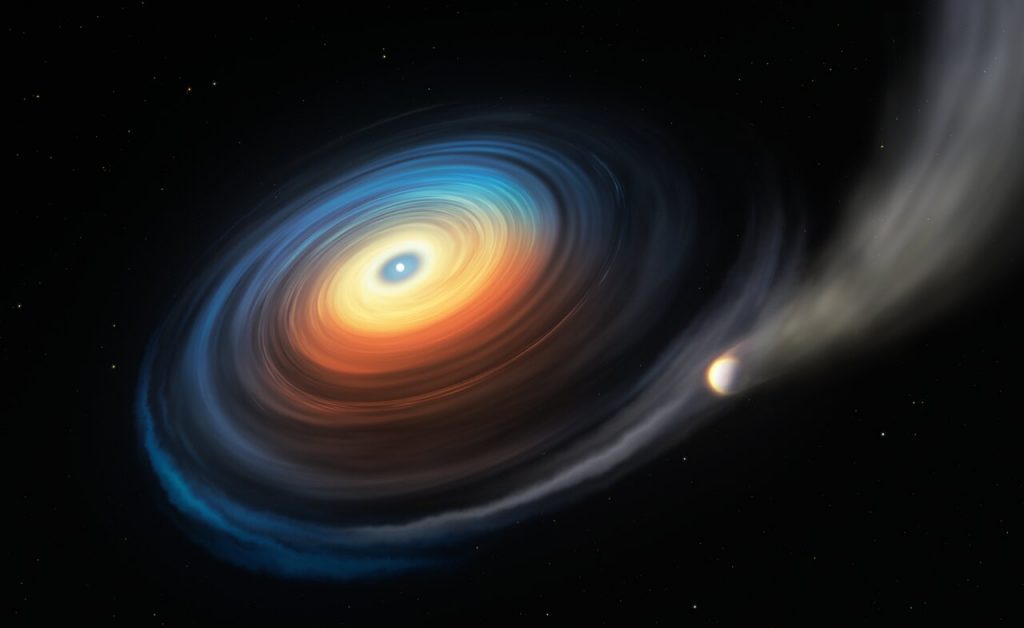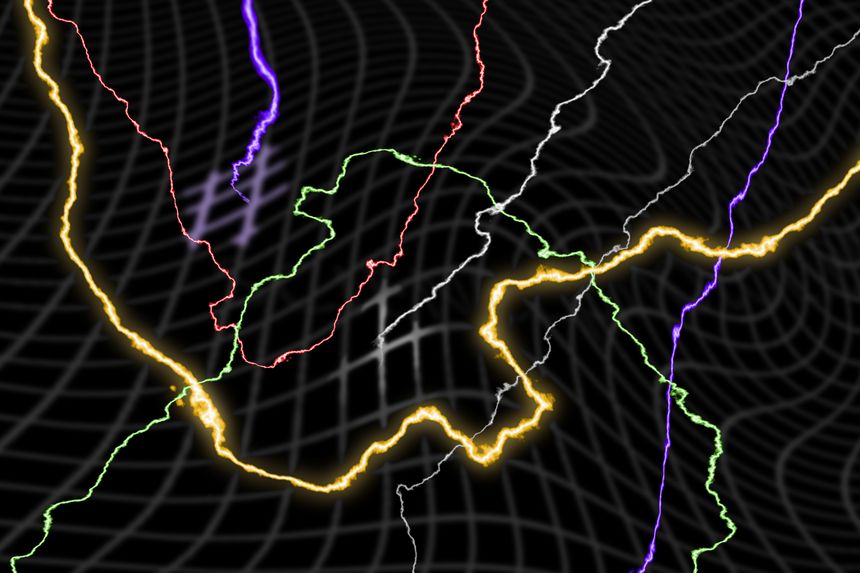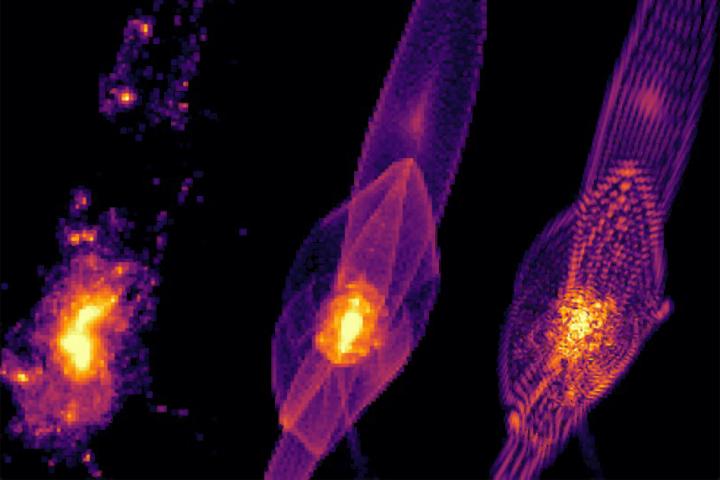In the early universe, a hydrogen diet made black holes fat
Only a billion years after the big bang, there were already galaxies whose centers harbored supermassive black holes several billion times the mass of our Sun. Astronomers know this from observations of far distant quasars and active galaxies. But how were the black holes able to grow so large so quickly? The problem seemed even more complicated, because earlier observations with ALMA, the Atacama Large Millimeter/Submillimeter Array, had shown a lot of dust and gas in these early galaxies, which promoted rapid star formation. However, if a lot of stars were created, there would have been little left over…
